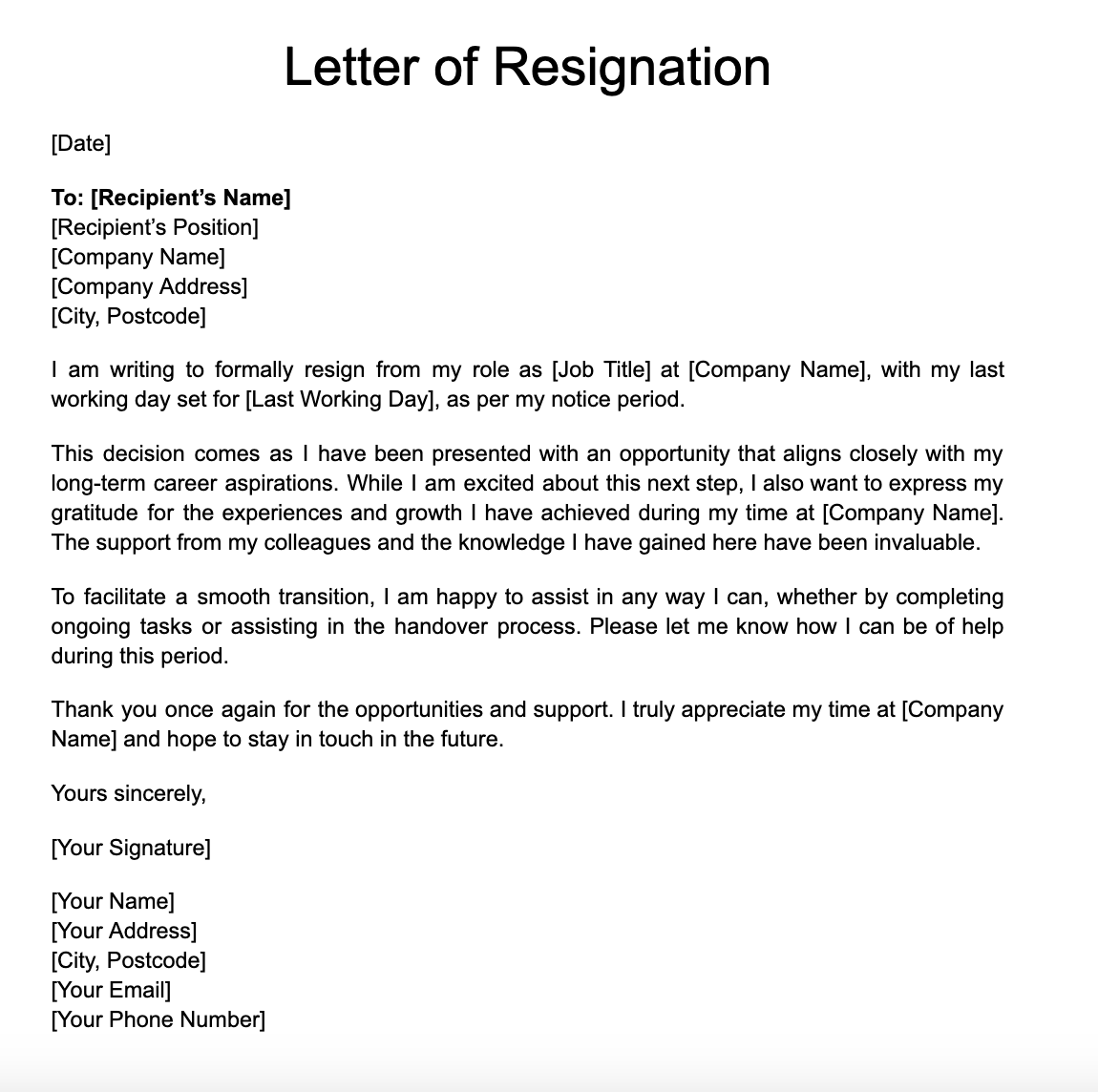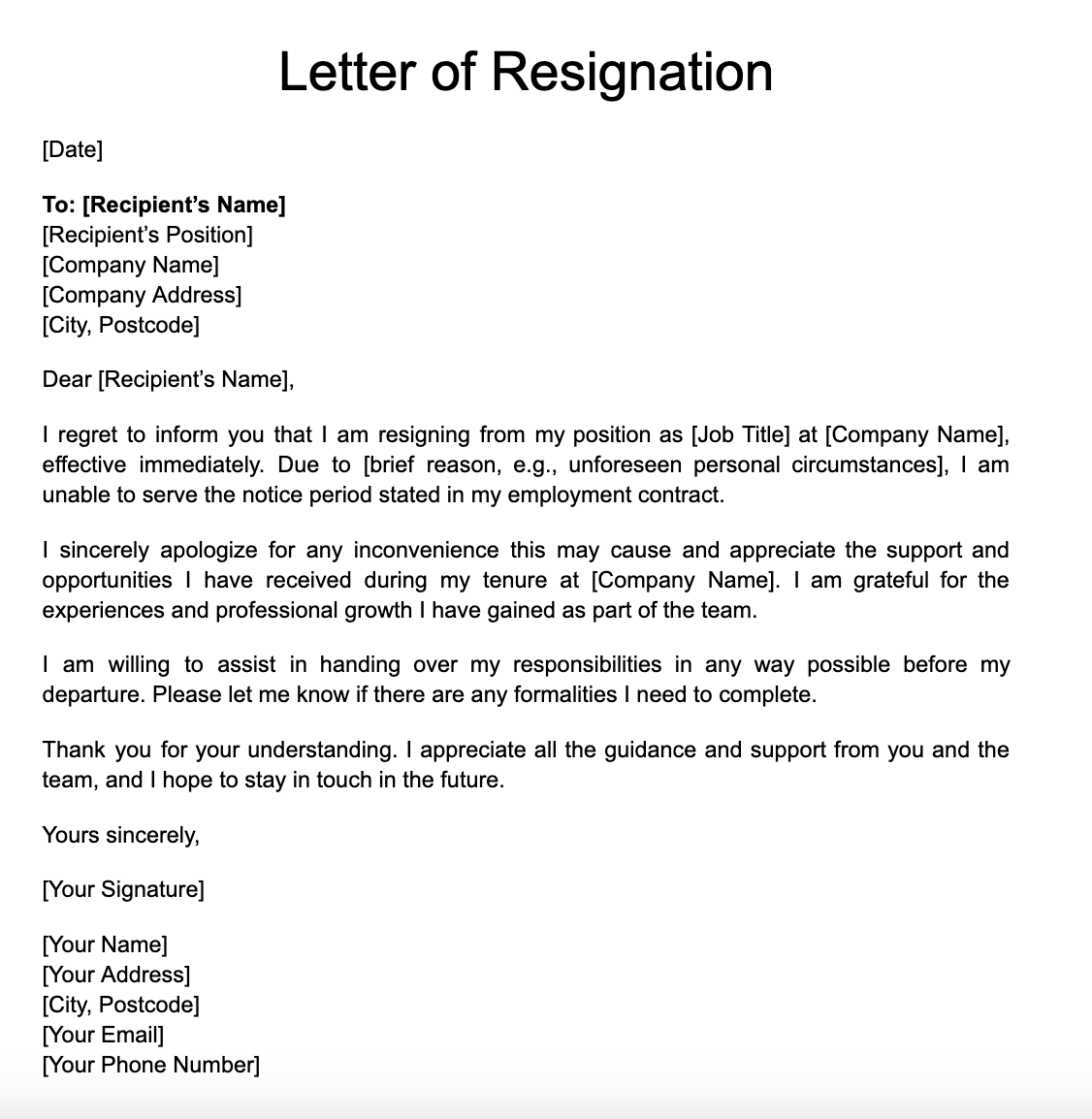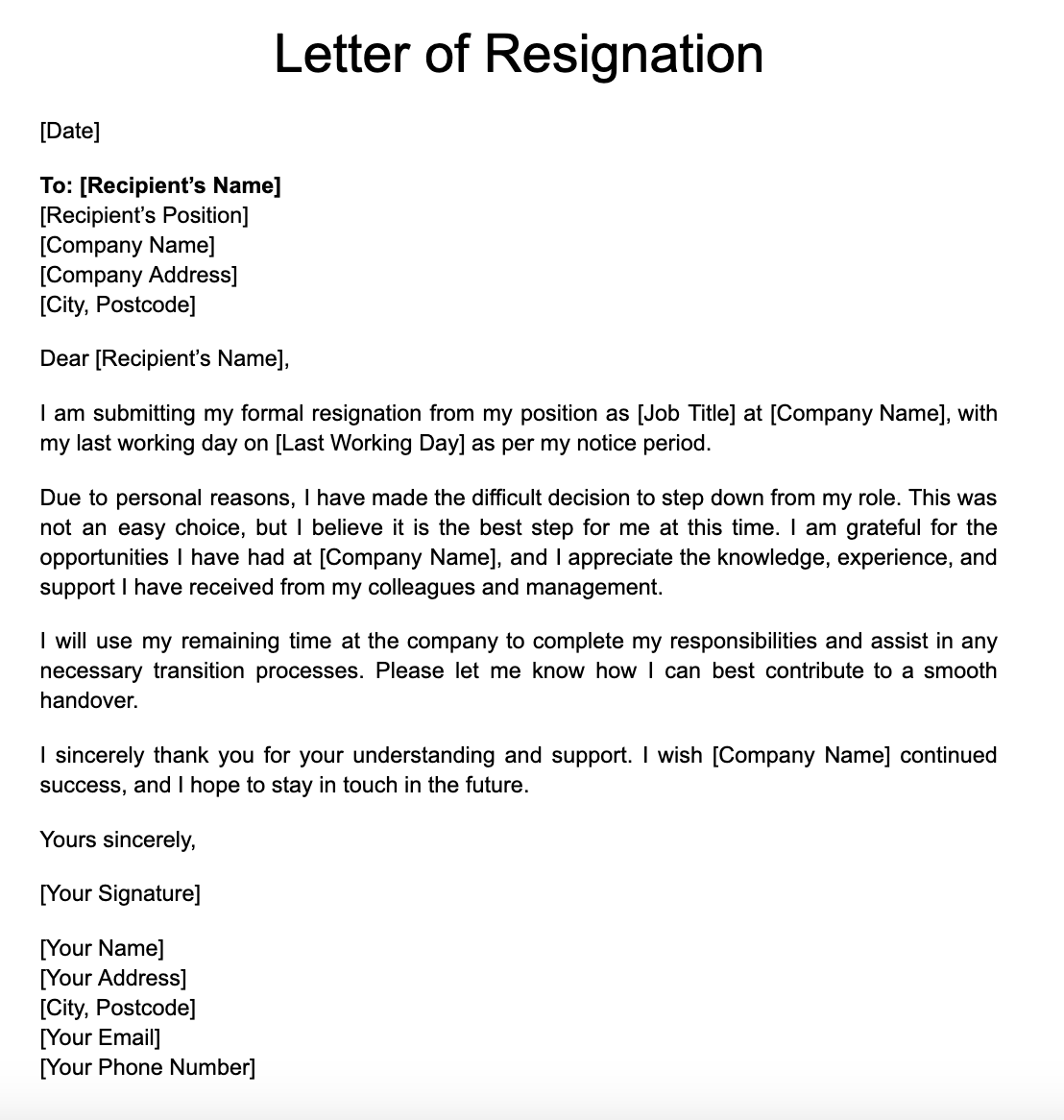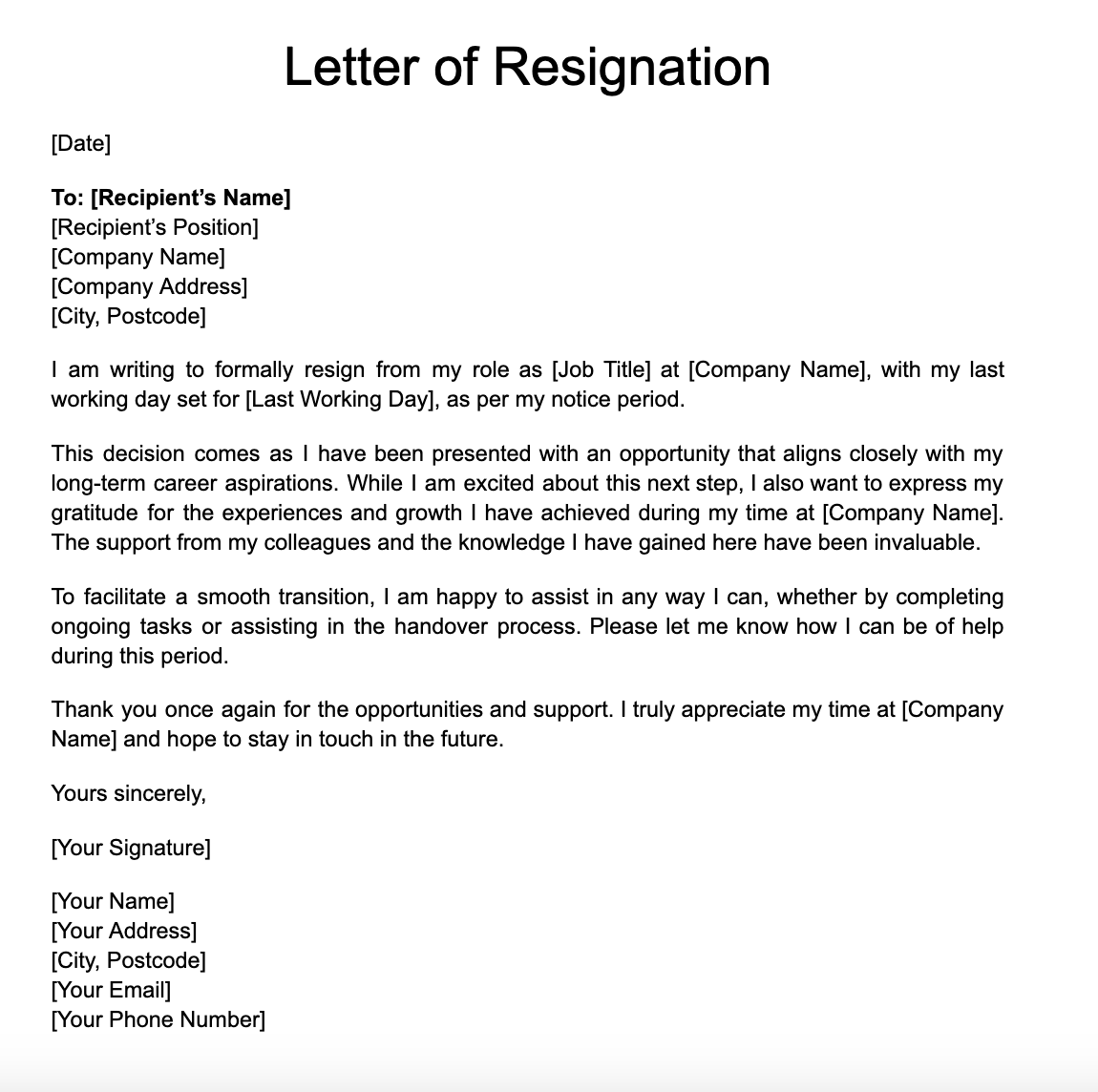
How to Handle Resignation Letter for Employers
Are You Hiring?
Find candidates in 72 Hours with 5+ million talents in Maukerja Malaysia & Ricebowl using Job Ads.
Hire NowResignations are a normal part of running a business. Employees come and go for various reasons.
Some find new opportunities, others relocate, and some leave for personal reasons.
As an employer, how you handle an employee’s resignation can leave a lasting impression not just on the departing staff but also on the remaining team members.
While it may seem like a simple document, it plays an important role in maintaining professionalism and ensuring a smooth transition.
In this guide, we will go through the proper way for HR and employers to handle resignation letters, legal considerations in Malaysia, and the best steps to take when an employee resigns.
What is a Resignation Letter?
A resignation letter is a formal document where an employee states their decision to leave a company.
It typically includes the notice period, the final working day, and, in some cases, the reason for leaving.
Some employees may also express gratitude for their time at the company during exit interview or offer assistance in handing over their responsibilities.
From an employer’s perspective, the resignation letter serves as an official record of the employee’s departure.
It helps HR track notice periods, process final payments, and manage the transition process smoothly.
Without a written resignation letter, there may be confusion regarding the employee’s last day and exit terms.
Why Employees Must Submit a Formal Resignation Letter
A resignation letter is important for handling an employee’s departure properly.
It confirms the employee’s last working day and shows that the resignation is voluntary.
The letter helps HR and management plan for a replacement, reassign responsibilities, and transfer knowledge smoothly.
Most contracts require a notice period, and a resignation letter confirms the employee is following the rules.
A formal resignation keeps things professional and allows for a good relationship in the future.
Steps for Employers Upon Receiving a Resignation Letter
When an employee submits their resignation letter, HR and management need to act quickly to manage the transition effectively. Below are the steps employers should take:
1. Acknowledging the Resignation Letter
Once a resignation letter is received, HR or the reporting manager should acknowledge it immediately, preferably in writing.
A simple email or letter confirming receipt of the resignation letter and stating the next steps can help prevent any miscommunication.
2. Verifying Notice Period Compliance
Check the employee’s contract to confirm the required notice period. If the resignation letter does not align with the contract, discuss this with the employee.
Some may request a shorter notice period, which should be handled based on company policy.
3. Arranging an Exit Interview
Exit interviews are valuable for understanding why employees leave. It provides insight into workplace culture, job satisfaction, and potential areas for improvement.
Employers should conduct exit interviews professionally and use the feedback to improve employee retention.
4. Finalizing Salary, Benefits, and Last Working Day
HR needs to calculate the final salary, including any outstanding payments such as unused leave, bonuses, or deductions.
This step ensures that the employee receives their full and correct final pay.
5. Managing Knowledge Transfer & Handover Process
The departing employee should document important tasks, train replacements if needed, and hand over ongoing work.
This process should be scheduled within the notice period to prevent work disruptions.
6. Processing Final Payments & Benefits
Before the employee’s last working day, finalize payroll adjustments and process their final salary.
This includes statutory deductions such as EPF, SOCSO, and any outstanding benefits.
A smooth final payment process reflects well on the company and maintains a positive relationship with former employees.
Legal Considerations for Resignations in Malaysia
Resignations must comply with the Employment Act 1955 and the terms outlined in an employee’s contract. Some key legal points to remember:
-
Notice periods: Most employment contracts state a notice period of one (1) month, but higher-level positions may require two (2) to three (3) months. If an employee wishes to resign immediately, they may need to pay compensation instead of notice.
-
Unpaid leave and benefits: Any unused annual leave should be compensated as part of the final salary.
-
EPF & SOCSO contributions: Employers must complete the final statutory contributions before the employee’s exit is processed.
Can an Employer Reject a Resignation Letter?
An employer generally has no right to reject a resignation letter unless the employee has violated the terms of their contract.
However, there are specific situations where employers may respond with certain actions:
-
When an employee resigns without notice, the employer can deduct the equivalent salary for the notice period from the final paycheck.
-
If the resignation affects critical business operations, employers can negotiate for a longer notice period, but they cannot force an employee to stay.
In cases where an employee resigns immediately and refuses to fulfill their contractual notice, the employer has the right to seek compensation based on the agreement stated in the employment contract.
How to Calculate Employees Salary When Resign
Step 1: Determine the Last Working Day
Confirm the employee’s official resignation date. Check if they have served their full notice period or if a deduction for unserved notice applies.
Step 2: Calculate Pro-Rated Basic Salary
If the employee worked for only part of the month, calculate their pro-rated salary:
Formula:
(Monthly Salary/Total Working Days in Month) x Days Worked Example:
An employee earning RM 4,000 resigns on the 15th of a month with 30 days. Their salary calculation would be:
(4000 ÷ 30) × 15 = RM 2,000
Step 3: Calculate Leave Encashment (If Any)
If the employee has unused annual leave, they are entitled to leave encashment.
Formula:
(Annual Leave Balance) x (Daily Salary) Example:
If the employee has 5 days of unused leave, the calculation is:
5 x (4000/30) = RM 666.67
If they have taken excess leave, deduct the equivalent amount.
Step 4: Add Other Payables (If Applicable)
- Bonuses, commissions, or incentives
- Expense reimbursements
- Overtime pay (OT Calculation):
(Hourly Rate × OT Hours × OT Rate)Example for 5 hours of OT at 1.5x rate:
(4000/26/8) x 5 x 1.5 = RM 144.23
5. Deduct Any Payables to the Company
- Unserved Notice Deduction:
(Monthly Salary/Total Working Days in Month) x Unserved Days Example for an unserved 10-day notice period:
(4000 ÷ 30) × 10 = RM 1,333.33
-
Other deductions:
- Employee loans or salary advances
- Company property loss or damages (if applicable)
- EPF, SOCSO, and PCB Tax (as per standard monthly deduction)
6. Process Final Salary Payment
Ensure the final salary is paid within the legal timeframe (e.g., within 7 days in Malaysia). Issue a final payslip detailing the breakdown.
Final Salary Calculation Example
| Item | Amount (RM) |
|---|---|
| Pro-rated salary (15 days) | 2,000.00 |
| Leave encashment (5 days) | 666.67 |
| Overtime pay (5 hours @1.5x) | 144.23 |
| Bonus (if applicable) | 0.00 |
| Deduction (Unserved 10 days) | -1,333.33 |
| Final Salary Payable | 1,477.57 |
What Happens if an Employee Resigns Without Notice?
If an employee resigns without notice, they may be required to compensate the company for the shortfall in notice period.
The employer can deduct this amount from their final salary or take legal action if necessary. However, it is best to handle such cases professionally to avoid disputes.
Can an Employer Terminate an Employee After Resignation?
If an employee submits a resignation letter, the employer generally cannot terminate them unless misconduct is involved.
However, if an employee resigns and later commits a serious offense during the notice period, the employer may take disciplinary action, including termination.
How Should HR Handle a Resignation During Probation?
For employees in probation, the notice period is usually shorter (one to two weeks).
If a probationary employee resigns, HR should process the resignation quickly and confirm their final payment based on their contract terms.
What Should an Employer Do If an Employee Withdraws Their Resignation?
If an employee changes their mind and wants to withdraw their resignation, it is up to the employer to decide whether to accept it.
Factors such as performance, role availability, and business needs should be considered before making a decision.
How to Respond to an Employee’s Resignation Letter
When an employee resigns, HR should handle it professionally to maintain a positive work environment.
Accepting the Resignation Professionally
Acknowledge the resignation politely, regardless of the circumstances.
Express appreciation for the employee’s contributions and keep communication professional and supportive.
Clarifying the Last Working Day and Final Payments
Confirm the employee’s last working day based on their notice period.
If they resign immediately, discuss any necessary deductions. Inform them about final payments, including salary, leave compensation, and clearance procedures.
Formal Response Templates from HR
After addressing the resignation professionally and clarifying important details, HR should issue a formal written response.
Below is a standard template HR can use:
Subject: Acceptance of Resignation – [Employee’s Name]
Dear [Employee’s Name],
We acknowledge your resignation dated [Date], stating your intention to resign from your position as [Job Title] at [Company Name].
Your last working day with the company will be [Last Working Date], based on the notice period stated in your employment contract. Kindly complete any ongoing tasks and facilitate a smooth handover before your departure.
We appreciate your contributions to [Company Name] and wish you success in your future endeavors. Please reach out to [HR Contact] should you require any further assistance regarding your final salary, benefits, or clearance process.
Best regards,
[HR Representative’s Name]
[Company Name]
[HR Contact Information]
Editable Resignation Letter Templates for Resigned Employees
To help employees create a resignation letter, here we share some templates that employees can use as reference.
1. Basic resignation letter template

Get the template here.
2. Resignation with immediate effect template

Get the template here.
3. Resignation due to personal reasons template

Get the template here.
4. Resignation due to career advancement template

Get the template here.
When employees leave, employers need to manage the transition smoothly.
Proper resignation handling minimizes disruption, keeps operations running efficiently, and reassures existing employees.
Need to hire employees in Malaysia?
Post your job ads on Maukerja, Ricebowl, LinkedIn, and Google with AJobThing to find the best talent today!
Read More:
- 10 Exit Interview Questions to Ask Employees
- Tips for Interviewer: How to Prepare and Conduct a Virtual Interview
- Key Performance Indicator (KPI): Definition, Types, Dashboard, Criteria and Examples
- How to Handle Quiet Quitting in Malaysia
- How to Check Income Tax for Employers in Malaysia
- What Are Statutory Deductions? Definition, Types, Example
- Calculate Take-Home Salary in Malaysia (With Examples)
- Tax Borne by Employers: What is it and How to Calculate
- How to Check Income Tax for Employers in Malaysia
- B40, M40, and T20 Salary Range in Malaysia (2025 Update)
- Malaysia Salary Tax Rate 2025 (YA 2024): How to Calculate, Tax Bracket
- Salary Slip Malaysia: Format, Sample, and Free Download

